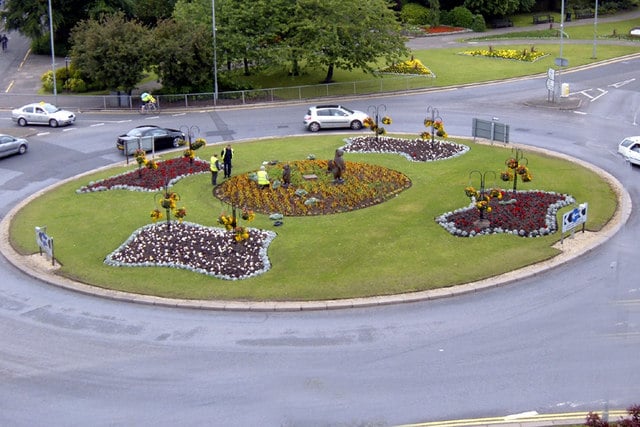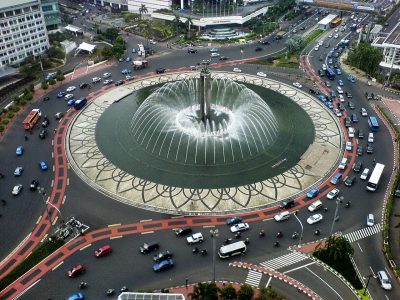Unless you grew up in the United Kingdom or Australia, roundabouts probably seem like a less common occurrence to you than signaled intersections. Because of this, roundabouts can be a little disorienting, especially for new drivers or first-time users.
That being said, roundabouts are appearing with higher frequency across the nation, especially within Utah. From 1996 to 2013 Utah, has constructed over 180 roundabouts, according to Roundabouts USA. And there’re more on the way.
Table of Contents
Why So Circular?
Despite the relative newness of roundabouts and the hesitation some drivers have towards these circular intersection, roundabouts are a safety measure to lower traffic accidents.
The Highway Safety Manual indicates that:
By converting from a two-way stop control mechanism to a roundabout, a location can experience an 82 percent reduction in severe (injury/fatal) crashes and a 44 percent reduction in overall crashes.
The U.S. Federal Highway Administration (FHWA) endorses roundabouts as a viable safety alternative for these reasons:
- Lower Speeds: the circular shape encourages drivers to use lower speeds, decreasing the chances and severity of car accidents at intersections.
- Operational: by functioning on a yield system, roundabouts can meet the high and low-flow hours of traffic.
- Reduces Traffic Conflict: Having traffic channel into the flow of traffic eliminates flows of traffic that cross paths (for example, left hand turns at a signal must cross the path of traffic which is heading in a different direction).
Utah’s Driver’s Handbook adds to FHWA’s points: “a roundabout has 12 potential points of conflict compared to 56 potential points of conflict at a regular ‘4-leg’ intersection.”
The Future of U.S. Traffic Safety
The theoretical benefits of roundabouts have driven the United States towards a national increase in roundabouts. As of December 2013, according to Roundabout USA, roundabouts in the United States has increased to approximately 3,700 nationwide (still a rather small amount when compared to the 25,000 roundabouts in the UK and 32,000 roundabouts in France).
In addition to past efforts, the U.S. Department of Transportation has plans to continue increasing roundabouts in the United States. FHWA encourages states to consider roundabouts as alternatives for:
- intersections that involve federally funded construction or reconstruction;
- existing intersections that have been identified as needing major safety or operational improvements;
- and freeway interchange ramp terminals and at rural high-speed intersections.
Whether you love or hate roundabouts, it seems as though they are here to stay.
Take 2 Minutes to Refresh Your Roundabout Safety Knowledge
Four Basic Rules (Utah Driver’s Hand Book):
- Always yield to traffic that is already in the roundabout.
- Roundabouts run counter clockwise, always enter the roundabout to your right.
- Always yield to pedestrians.
- Always signal going in and out of a roundabout.
Multi-lane Roundabouts
Though multi-lane roundabouts may be intimidating, there are rules that can help you get into the correct lane for your exit. “To go straight or right, get in the right lane. To go straight or left, get in the left lane. Drivers can also make U-turns from the left lane,” according to WSDOT.
Signaling in a Roundabout
Signaling in a roundabout functions on the same ideas behind signaling in a 4-legged intersection; signaling towards the exit you will be taking in reference to where your will enter the intersection.
Good Guys Injury Law encourage safety in driving whether it’s through a roundabout or a signaled intersection. We appreciate you taking the time to know the traffic laws that will improve safety on the roads. Our attorneys have had many opportunities to work with injured victims of others negligence on the road and we are dedicated to serving our clients through this stressful time of their lives. If you think that you or someone who you know may benefit from our services, please feel welcome to call us with any questions at 801-506-0800.

